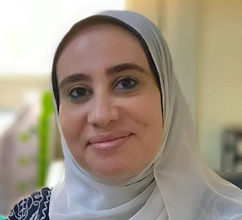Day :
- Molecular and Clinical Pharmacology

Chair
Elza Nikoleishvili
The University of Georgia, Georgia
Session Introduction
Melanie Hermann
Evotec SE, Germany
Title: High content histology in drug discovery programs – A tool for target validation

Biography:
Abstract:
Djebbar Atmani
Universite de Bejaia, Algerie
Title: Pistacia lentiscus as a source of bioactive compounds for human health

Biography:
Abstract:
Wan-Ting Liao
Show Chwan Memorial Hospital, Taiwan
Title: Integrative traditional Chinese medicine therapy reduces risk of type 2 diabetes mellitus in patients with polycystic ovary syndrome

Biography:
Abstract:
Abdul Mannan Fateh
University of Malaya, Malaysia
Title: Study of morphogenesis and skeletal abnormalities from an aqueous extract of Verbena officinalis on developing SD embryos

Biography:
Abdul Mannan Fateh is currently studying PhD final year student in Pharmacology Department in the Faculty of Medicine in University Malaya in Malaysia. He has completed his Master’s degree (MSc) in Toxicology Department of Medical Elementology and Toxicology, Hamdard University (New –Delhi) India. He has worked in Medical College from 2008–2013 as a Lecturer in Toxicology in Yemen. He has published three Research Publications in well-reputed ISI journals Q1 and Q2 and high impact factor, participant in two international conferences at Oslo, Norway and Malaysia.
Abstract:
Marwa M Safar
The British University, Egypt
Title: Venlafaxine ameliorates complete Freund's adjuvant-induced arthritis in rats via targeting STAT-3/IL-17/RANKL axis

Biography:
Abstract:
Noha F Abdelkader
Cairo University, Egypt
Title: Mechanisms underlying the gastroprotective effect of irbesartan aganist indomethacin-induced ulcer in rats
Time : 15:30-16:00

Biography:
Abstract:
Recently, angiotensin II type 1 receptor blockers (ARBs) has emerged as a potential gastroprotective candidates. Thus, the aim of the current study was to investigate the gastroprotective potential of irbesartan in a rat model of gastric injury. Adult male Wistar rats were randomly allocated into five groups. Group I rats served as a control group. Group II rats were treated with irbesartan. Rats of groups III-V were treated with indomethacin. Wherase, groups IV and V were pretreated with ranitidine, as a reference anti-ulcer drug, and irbesartan; respectively. Irbesartan (50 mg/Kg, p.o) was administered once daily for two weeks; thereafter, gastric injury was induced by indomethacin (60 mg/Kg, p.o). Treatment with irbesartan mitigated indomethacin-induced elevation in gastric ulcer index and acidity, gastric mucosal apoptotic and inflammatory aberrations, as demonstrated by hampering caspase-3, prostaglandin E2 and tumor necrosis factor-alpha levels and cyclooxygenase-2 mRNA expression. Furthermore, irbesartan increased mucosal dimethylarginine dimethylaminohydrolase-1 (DDAH-1) gene expression and decreased elevated levels of matrix metalloproteinase-9, asymmetric dimethylarginine (ADMA), epidermal growth factor receptor (EGFR) mRNA and phosphorylated extracellular signal-regulated kinase 1 and 2 (pERK1/2). Morover, irbesartan ameliorated gastric histopathological alterations. Overall efficacy of irbesartan was comparable to ranitidine, the widely used H2 receptor blocker. In conclusion, irbesartan exhibited a significant gastroprotective effect against indomethacin-induced mucosal damage via acid-inhibitory, antiinflammatory, anti-apoptotic and extracellular matrix remodeling mechanisms that are probably mediated, at least partly, by down-regulating DDAH/ ADMA and EGFR/ERK1/2 signaling.
Naile Merve Guven
Ankara University, Turkey
Title: Role of oxidative stress and polycystic ovary syndrome
Time : 16:00-16:30

